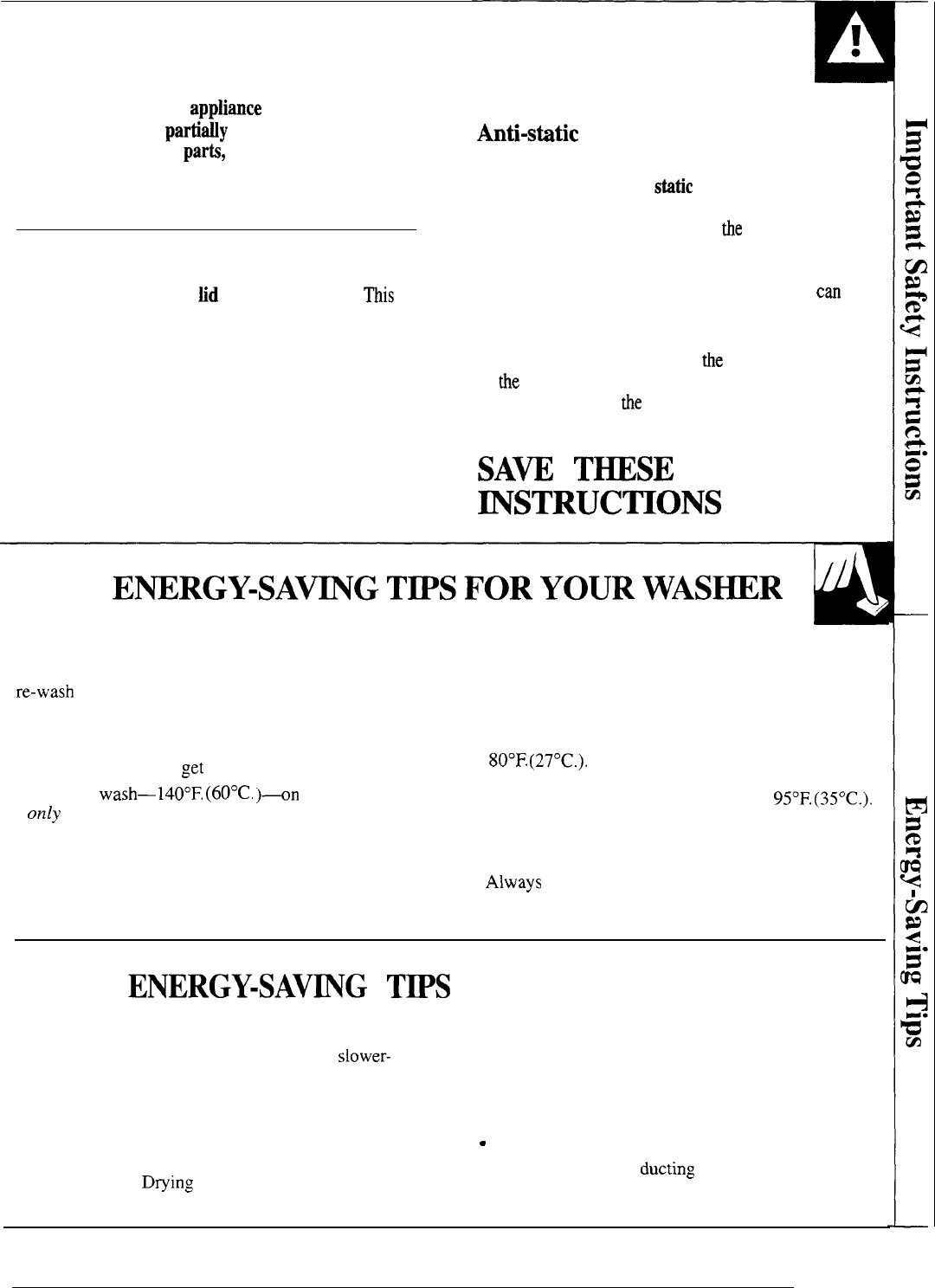
●
Do not operate this
apptiance
if it is damaged,
malfunctioning,
partidy disassembled, or has
missing or broken
parti,
including a damaged
cord or plug.
●
Never climb on or stand on the dryer top.
For washer operation
●
Do not leave washer
Ud
up during cycle.
~is
will stop the spin action and prevent completion
of the cycle.
Dryer-applied Fabric Softeners or
Anti-stitic
Conditioners
You may wish to soften your laundered
fabrics or reduce the
static
electricity in them.
We recommend you use either a fabric softener
in the wash cycle, according to
the
manufacturer’s
instructions for those products, or try a dryer-added
product for which the manufacturer gives written
assurance on the package that their product
can
be
safely used in your dryer.
Service or performance problems caused by
the use of these products are tie responsibility
of
the
manufacturers of those products and are
not covered under
the
warranty of this appliance.
SAW
T~SE
~STRUC~ONS
If your clothes and household items don’t look
clean and fresh after washing, you will probably
re-wash
them.. and that means you’ll waste energy.
Remember to sort your clothes carefully, and load
them properly, select correct cycles, use enough
detergent and choose a water temperature warm
enough to release and
get
rid of soil.
●
Use HOT
wash—140°F.
(60°C.
)+n
a regular basis
only
when washing heavily soiled articles-such as
work and play clothes.
●
Try to wash less often. Save articles of the same type
of fabric until you have a full load.
●
If you must wash smaller loads, adjust the amount of
water. Small loads should have lower water levels.
●
Wash in off-peak utility hours. Your local utility can
tell you which are the off-peak hours.
●
Under normal soil conditions, wash in water above
80°F.
(27°C.).
This generally means using the
WARM wash temperature setting on your
washer—temperatures approximately
95°F.
(35°C.).
If you notice that soil has accumulated after several
consecutive washings, use HOT wash occasionally,
if safe for fabrics.
●
Always
rinse in COLD water. The temperature of
the rinse does not affect cleaning.
ENERGY-SA~G
TWS
FOR YOUR DRYER
●
Sort clothes by weight so you won’t have to
●
To help prevent ironing, remove garments
run an extra cycle for one or two heavier,
slower-
immediately at end of drying cycle and place
drying items.
on hangers.
●
Do not overload dryer. The drum should be no more
●
Dry your clothes in consecutive loads. Using a
than half full of wet articles. For efficient drying,
“warm” dryer will save energy.
clothes need to tumble freely. Overloading prolongs
drying time and produces uneven drying.
c
Clean lint filter each time you dry.
●
Clean dryer exhaust
ducting
at least once a year. A
●
Use Automatic
Drying
Cycle whenever possible
to help prevent overdying and save energy.
partially clogged exhaust can lengthen drying time.
5


















